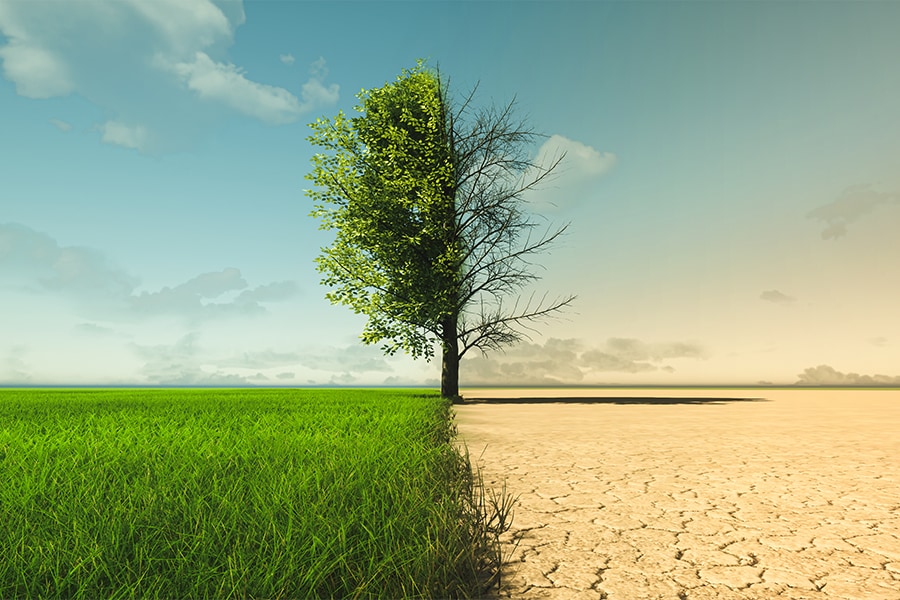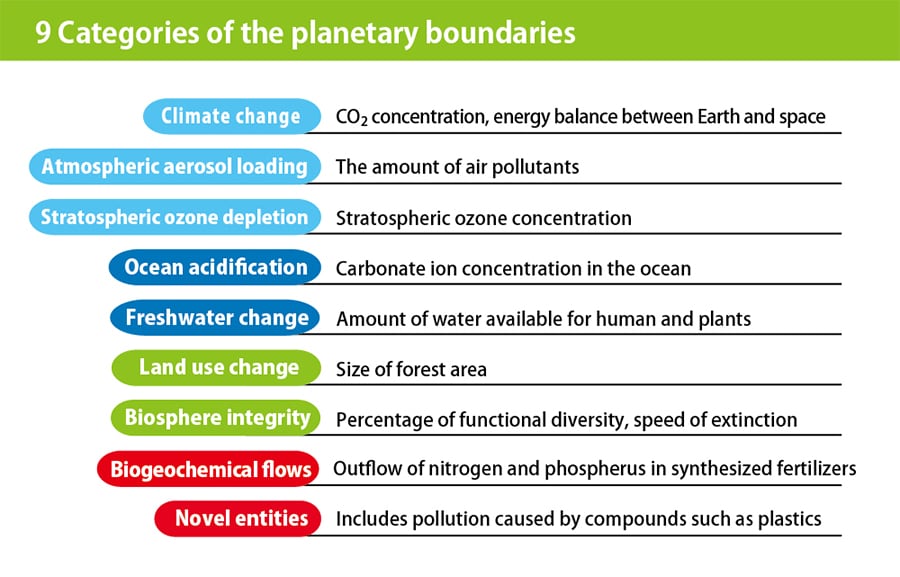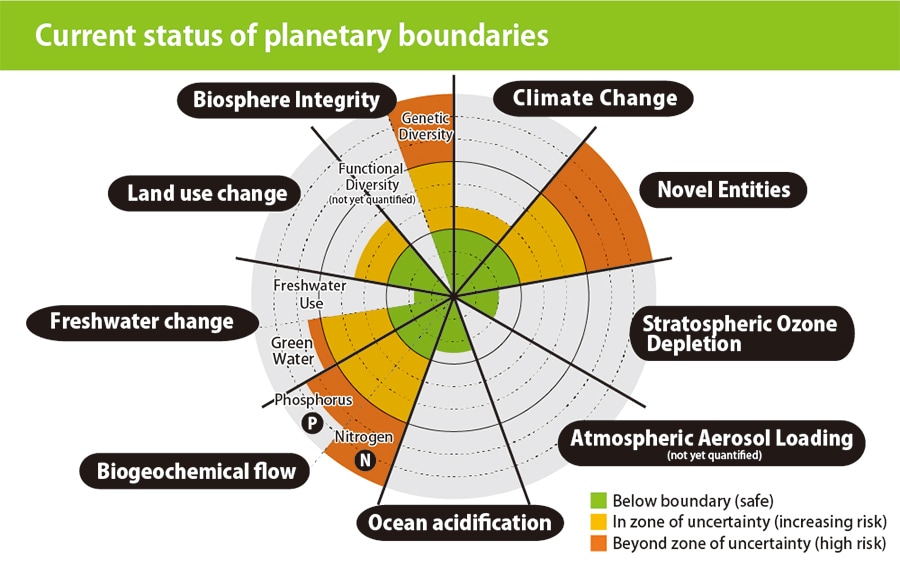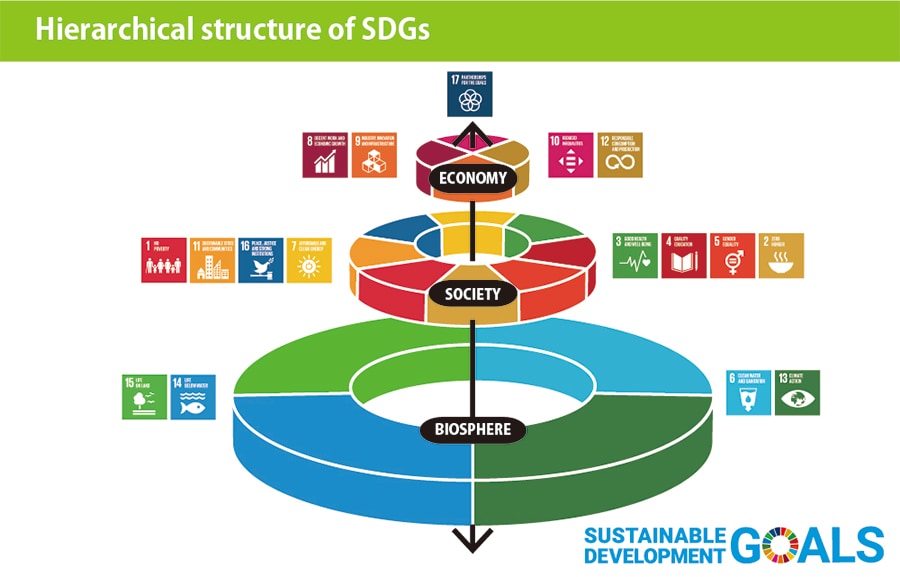
The concept of "planetary boundaries" is increasingly attracting attention around the world. Many global companies have begun to adopt this concept, and they now refer to it in their business activities.
First proposed in 2009 and having influenced the Sustainable Development Goals (SDGs), what exactly is the concept of "planetary boundaries"? Moreover, how should companies connect this concept to their business?
We interviewed Dr. Kazuhiko Takeuchi, President of the Institute for Global Environmental Strategies (IGES), who has long researched environmental studies and sustainability science.
-- While SDGs has already gained the public understanding in Japan, the concept of "planetary boundaries" is now garnering attention around the world. What does this term mean?
Takeuchi: This concept clearly indicates that there are boundaries for the global environment that must not be surpassed in order for humans to survive sustainably on the Earth. Different boundaries are set for several categories.
When humans undergo a health check-up to determine the state of their body, various types of tests are carried out. For each test, there is a specific boundary that shows "if the value goes above or below this level, it is dangerous for you." Planetary boundaries are just the same, except they are set to determine the condition of the Earth.

Dr. Kazuhiko Takeuchi, President of the Institute for Global Environmental Strategies (IGES)
(Photo: Kosei Nozaki)
-- Please tell us in detail about these boundaries.
Takeuchi: There is a total of 9 boundaries: (1) climate change, (2) atmospheric aerosol loading, (3) stratospheric ozone depletion, (4) ocean acidification, (5) freshwater use, (6) land use change, (7) biosphere integrity, (8) biogeochemical flows of nitrogen and phosphorus, and (9) novel entities. Each boundary has a specific indicator as shown below.

Figure 1: 9 Categories of the planetary boundaries
For each boundary, a level (threshold) is set that must not be exceeded (or fall below). For example, for “climate change”, which is familiar to us all, the lower limit for atmospheric carbon dioxide concentration is set at 350 ppm with the upper limit at 450 ppm. In other words, if the level is over 450 ppm, the boundary of the Earth's capacity will have been exceeded.
However, the world's carbon dioxide concentration is already over 400 ppm. This means that the world as a whole is now in a state where further increases must be halted.
-- How did the idea of planetary boundaries come about?
Takeuchi: A team led by a Swedish environmentalist named Johan Rockström first presented the concept in 2009. However, the underlying idea emerged a little earlier in 2000, when a German chemist named Paul Crutzen claimed at an international conference on Earth sciences, "We are no longer in the Holocene. We are in the Anthropocene."
The Holocene is a geological classification of the period from 11,700 years ago to the present. Crutzen lamented the fact that the Earth's environment has been drastically altered by humans, and he described the present era as the "Anthropocene" rather than the Holocene.
Henceforth, the term "Anthropocene" became well-known, and the theory that the epoch began around 1950 became popular. This is because it was the time when energy consumption and environmental pollution due to human activities increased to an unprecedented level.
Researchers who believed that the dangers of this increasingly accelerating situation must be familiarized gathered from around the world, and eventually proposed the concept of planetary boundaries.

Dr. Takeuchi during the interview (Photo: Kosei Nozaki)
-- How many researchers were involved and how was the concept conceived?
Takeuchi: About 30 experts in various fields from Europe, Australia, and other parts of the world came together, and Johan Rockström and his colleagues put it all together. I have been involved in the field of sustainability science since its inception, and have had friendly associations with Johan Rockström, Will Steffen, and many of the other researchers participating in this project.
After learning how this concept was proposed, I got the impression that it was the result of very careful discussions about what boundaries should be included and what the boundary levels should be. Boundary levels have not been set for some of the boundaries. We can tell that researchers are honestly stating that there are still things that they are not sure about. That is why I think it is a very trustworthy concept and research result.

Figure 2: Current state of planetary boundaries
(Source: Will Steffen et al. "Planetary boundaries: Guiding human development on a changing planet")
-- Looking at Fig. 2, which shows the current state of the planetary boundaries, "biosphere integrity" in terms of the rate of extinction, "biogeochemical flows", and "novel entities" have already exceeded their boundary values. What would happen if the boundary levels are exceeded?
Takeuchi: For example, the boundary level for nitrogen is set at 62 teragrams (Tg) per year of nitrogen from industrial sources, but the actual measured level was 150 Tg per year. The extinction rate of 10 species per million per year is set as the boundary level, but actual measurements range from 100 to 1,000 species.
When the actual measured levels exceed the boundary levels and enter the red zone in the figure, irreversible changes are said to occur on the Earth. In other words, according to this figure, the rate of biological extinction and nitrogen excess have already reached such irreversible levels.
However, that does not mean that it is too late to do anything. The level and details of each planetary boundary are expected to be further updated in the future. I believe it is important to continue our efforts to keep human activities within the boundary levels while taking into account the latest scientific findings.
-- There seems to be some overlap between the SDGs and planetary boundaries. What is the relationship between the two?
Takeuchi: There is no doubt that the content of the SDGs is influenced by the concept of planetary boundaries. The 17 SDGs can be divided into three main categories: biosphere goals, social goals, and economic goals.

Figure 3: Hierarchical structure of the goals (Azote for Stockholm Resilience Centre, Stockholm University)
As shown in Fig. 3, the relationship between these 3 types of goals can be thought of as having the goals related to the biosphere as their foundation, with the goals related to society and the economy coming on top of that. The concept of "planetary boundaries" rest on the premise that society and economic activities should fit within the capacity of the biosphere, so we can say that it has had a major influence on SDGs.
Although the terms and content of the planetary boundaries are harder to understand than those of the SDGs, they are all closely related to our daily lives as they deal with land use, water, air pollution, and so on. My hope is that planetary boundaries will become a little more well-known in Japan in conjunction with the SDGs.
-- In its 2024 Mid-Term Management Plan announced, which was announced in April 2022, Hitachi identified planetary boundaries as one of the key business concepts. How can companies put the concept of planetary boundaries into practice?
Takeuchi: Many of the world's top companies are starting to become aware of the concept of planetary boundaries. Therefore, I think we should welcome the fact that companies like Hitachi are among the first in Japan to adopt this concept. In order to put this into practice in the future, I think it is important to have a philosophy of considering how to ensure that corporate activities can be carried out sustainably within the capacity of the global environment.
I would like to emphasize that the concept of planetary boundaries does not mean that there is a limit to the growth that we can achieve or that we should not grow any further for the sake of the Earth. It is a forward-looking concept that tells us, "Knowing that the Earth has limits, let's think about how we can grow within those limits." It is not about "the limits to growth" but about "growth within the limits."
I hope that Hitachi and other companies will create momentum that says, "Let's work together with an awareness of planetary boundaries for human society to keep on growing sustainably."

As a leading expert in sustainability science, Dr. Takeuchi is committed to promoting planetary boundaries. (Photo: Kosei Nozaki)